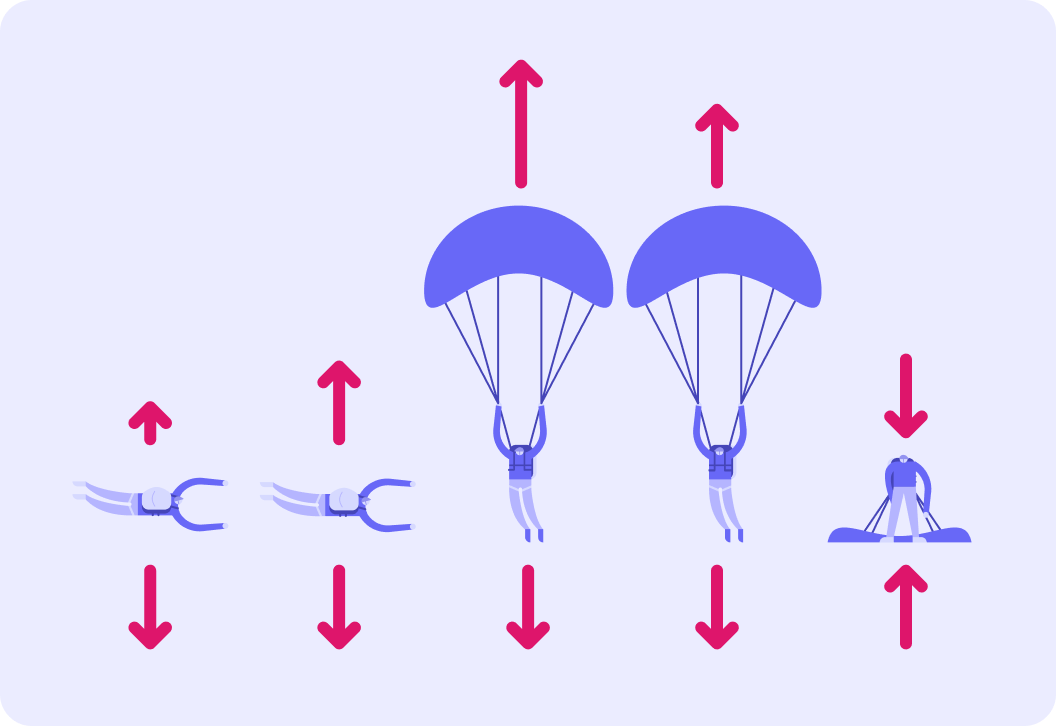YOU ARE LEARNING:
Newton's First Law 2

Newton's First Law 2
We can remind ourselves about Newton's first law, for example what happens when the resultant force is zero.
Newton's first law states that an object at rest will remain at rest, and an object in motion will remain in motion at the same speed and in the same direction unless acted on by an unbalanced force.
If all of the forces acting on an object are balanced, in which direction is the resultant force?

If a stationary object has a resultant force of zero, will it...

If an object in motion has a resultant force of zero, will it...

According to Newton's first law, if a car is travelling at a constant velocity what is the relationship between the driving and resistive forces acting on the vehicle?

The diagram shows how the forces acting on a skydiver change throughout the different stages of his jump.
The size of the arrows represent the magnitude of the forces.

At point b, are the forces acting on the skydiver balanced? Answer yes or no.


At point b the forces acting on the skydiver are balanced, and he is moving towards the ground at a constant speed. At which other point is he moving at a constant velocity?


At which point is the skydiver stationary (not moving)?


What do you notice about the vectors in a free body diagram when forces are balanced?

A box resting on a bench remains at rest until you push it, and a parked car remains stationary until the engine provides a driving force. What conclusion can you make about what you must do to an object at rest to make it move?

